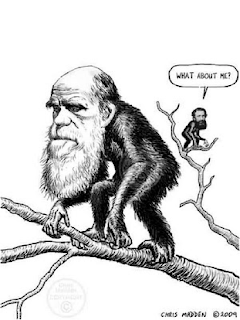Have you made your plans? Check out our Event Index for a quick scan of all events.
And our event of the day...
A real-life Indiana Jones and co-discoverer of evolution by natural selection?
Come learn more about the life of Alfred Russel Wallace at Wallace Day at the Harvard Museum of Natural History!
By Morgan Corner
We all know about the infamous theory of evolution by natural selection by the esteemed Charles Darwin, but who is Alfred Russel Wallace? How did he contribute to the history of evolution? Alfred Russel Wallace (1823-1913), who is considered the father of evolutionary biogeography, contributed to numerous subjects during the 19th century. In addition to co-discovering the process of evolution by natural selection with Darwin in 1858, Wallace was a famous English naturalist, geographer, anthropologist, travel writer, collector, explorer and spiritualist! Wallace explored numerous regions, including the Amazon and Indonesian areas. He even managed to explore the Rio Negro farther than anyone else had yet! His adventurous explorations in foreign, indigenous regions earned him the nickname of a real-life “Indiana Jones”.
So how does Wallace fit into the theory of evolution by natural selection?
Wallace’s immense explorations served as an investigation to evolution. Similar to Darwin, previous
 works such as the Principles of Geology, by Charles Lyell, inspired the driven natural historian to pursue research. However, in 1855, while Darwin was still secretly working on his theory of natural selection, Wallace wrote his “Sarawak Law” paper regarding the process of biological evolution. Freakishly similar to Darwin’s theory, especially since the two had no previous collaboration regarding evolution, Charles Lyell saw the similarities between Wallace’s paper and Darwin’s work, as well as noticed that Wallace might “beat” Darwin in publishing the theory. Lyell, who deeply understood the importance of publication within the scientific community, quickly moved to help Darwin receive the majority of the credit, although Darwin and Wallace technically published a joint paper citing them both as co-founders of the theory! Darwin, who panicked in light of Wallace’s paper, reached out to peers for help, causing him to abandon writing his extensive book on evolution and instead produce an “abstract” of his work so far. This supposedly brief “abstract” became Darwin’s notorious book Origin of the Species.
works such as the Principles of Geology, by Charles Lyell, inspired the driven natural historian to pursue research. However, in 1855, while Darwin was still secretly working on his theory of natural selection, Wallace wrote his “Sarawak Law” paper regarding the process of biological evolution. Freakishly similar to Darwin’s theory, especially since the two had no previous collaboration regarding evolution, Charles Lyell saw the similarities between Wallace’s paper and Darwin’s work, as well as noticed that Wallace might “beat” Darwin in publishing the theory. Lyell, who deeply understood the importance of publication within the scientific community, quickly moved to help Darwin receive the majority of the credit, although Darwin and Wallace technically published a joint paper citing them both as co-founders of the theory! Darwin, who panicked in light of Wallace’s paper, reached out to peers for help, causing him to abandon writing his extensive book on evolution and instead produce an “abstract” of his work so far. This supposedly brief “abstract” became Darwin’s notorious book Origin of the Species. Although Wallace was one of the world’s most famous scientists, since his time, he has been largely forgotten next to Charles Darwin. How is it that such a well-known natural historian with a wide range of interests has been overlooked in the history of science? Did the term Darwinism contribute to this issue? Who was considered more of a “Darwinist”- Darwin himself or Wallace?
Here’s a chance to come learn more about Alfred Russel Wallace at Wallace Day hosted by the Harvard Museum of Natural History on Saturday, April 20th. Explore the museum and observe a special one-day-only display (10 am-4 pm), attend a panel discussion about “who was Alfred Russel Wallace” (4-7pm) and listen in on a conversation about Wallace with E O Wilson! You can even witness a live Mr. Wallace impersonation by evolutionary biologist Andrew Berry (2 pm)! From panels to impersonations, Wallace Day offers a plethora of ways to learn about who Wallace was and the important contributions he made in the history of science!
For more details, please click here.
See a video about Wallace's collection:

No comments:
Post a Comment